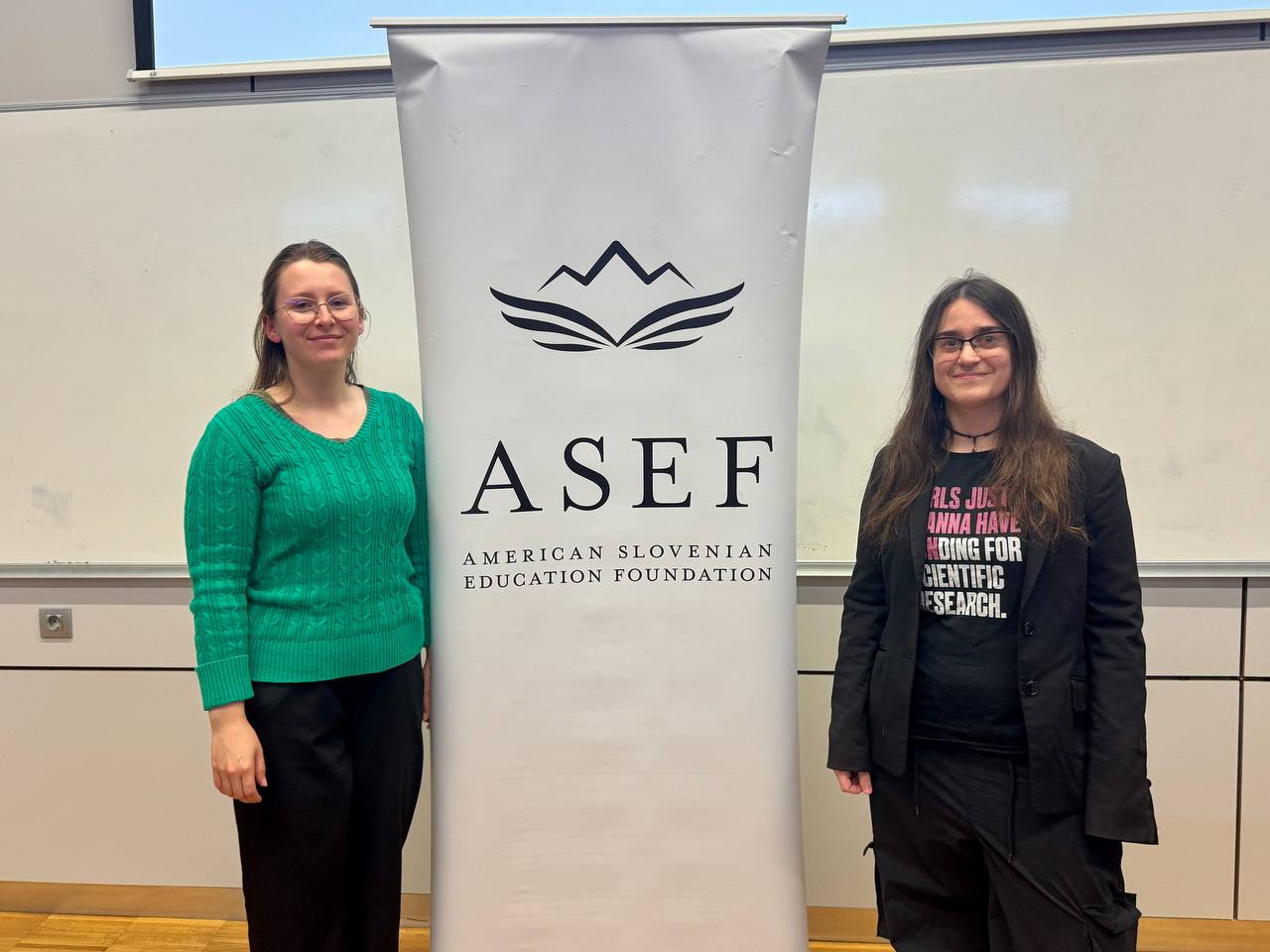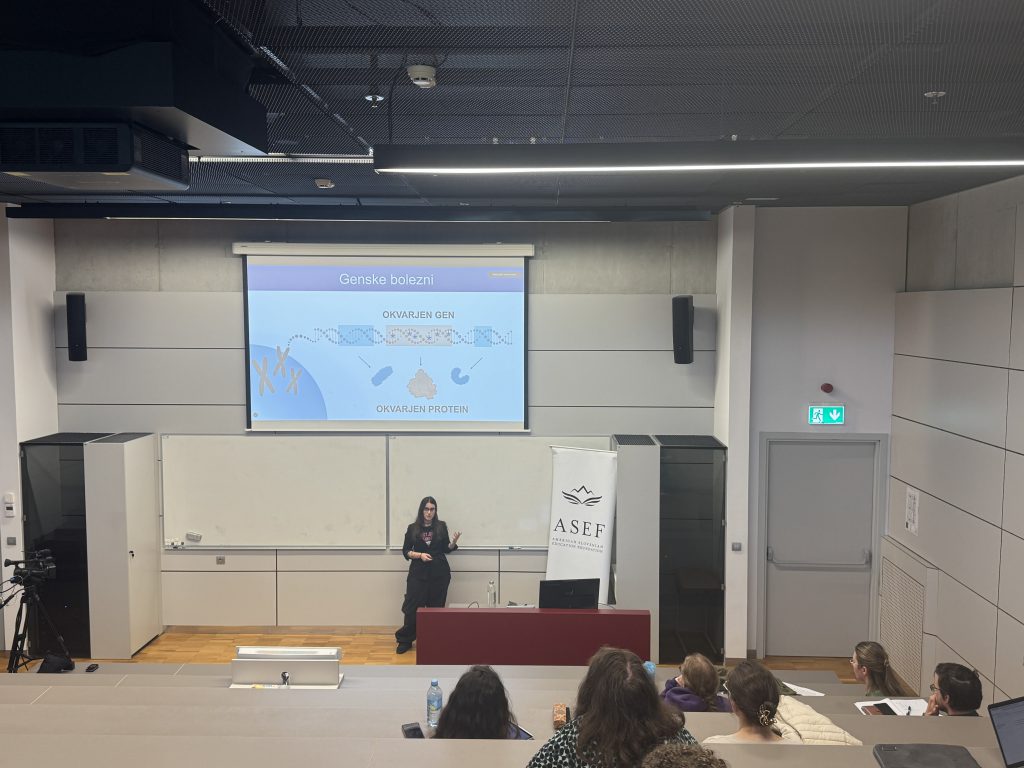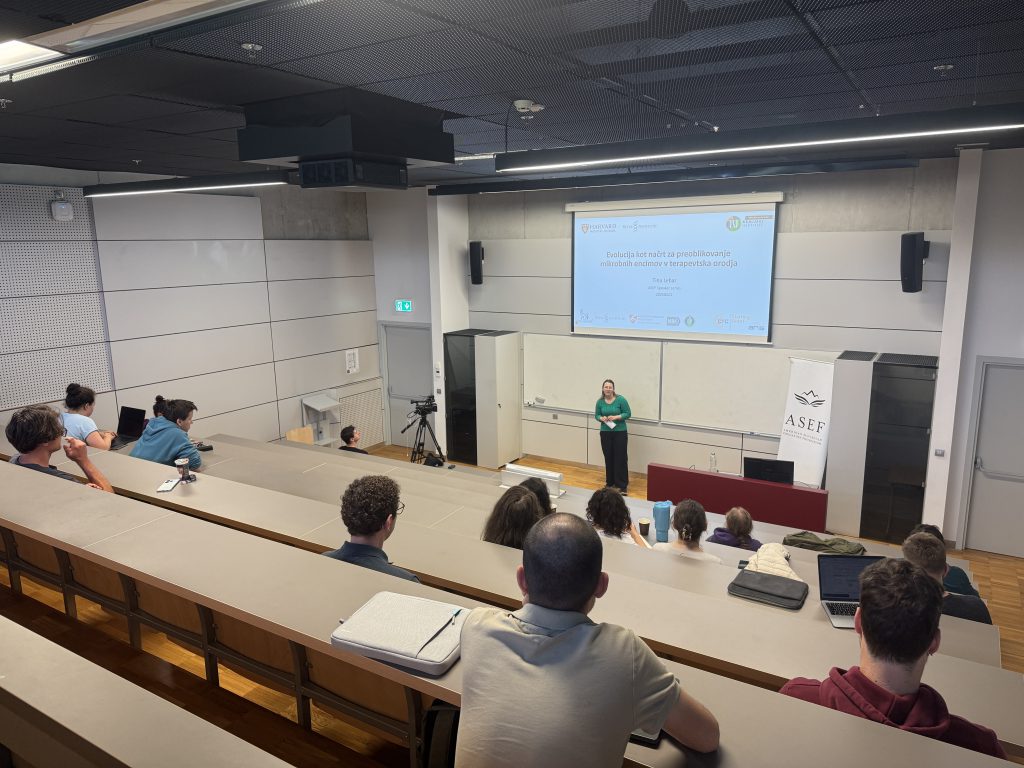
Dr Tina Lebar: Evolution as a blueprint for transforming microbial enzymes into therapeutic tools
On Wednesday, May 21st, ASEF organised a lecture at the Faculty of Chemistry and Chemical Technology of the University of Ljubljana and via Zoom as part of the ASEF Speaker Series. The popular science lecture entitled “Evolution as a roadmap for transforming microbial enzymes into therapeutic tools” was presented by Dr Tina Lebar, a researcher in the field of molecular biology.
Dr Lebar presented the project she has been developing for six years in the USA at Harvard University and will continue in Slovenia at the Institute of Chemistry, where she is currently setting up a new working group. Her project investigated the transformation of microbial enzymes, in particular tyrosine recombinases, into therapeutic tools for the treatment of genetic diseases.
The lecturer started her talk with a brief explanation of how DNA and genomes work, stressing the importance of stable insertion of gene copies on carefully selected targets in the host cell genome. She presented molecular tools for targeting selected targets and described mobile genetic elements and transposases that cut and insert these elements into new targets.

Dr Lebar explained more about the testing of Xer recombinases in human cells, which works very well as they exclusively identify their specific target. This confirms the potential of these enzymes to insert genetic material precisely and safely into selected sites in the genome. Dr Lebar explained that targeting is extremely challenging – thousands of combinations and targets can be tested in a single experiment. Using the library, 4000 targets were tested to see which recombinases bind to which targets.
The presenter went on to explain where the differences in target recognition come from. She showed that swapping recombinase modules changes their specificity in targeting targets, with modules being searched for on the basis of structural similarities. She highlighted that very similar binding profiles are obtained when the same module is used, regardless of the recombinase scaffold.
Dr Lebar pointed out that there are about 50,000 bacterial recombinases and 1000 targets known, which allows the design of new enzymes for virtually any sequence, and that they developed recombinases that can target existing recombinases. The lecturer highlighted that, despite their successes in precisely targeting target genomes, the efficiency of insertion still has to be improved in the future.

At the end of the lecture, listeners raised questions about opportunities to improve the efficiency of gene copy insertion on selected targets. The event was moderated by Vesna Jurjevič, ASEF Junior Fellow 2024.
We would like to thank the lecturer and moderator for an extremely informative and interesting lecture.
The event was organised with the support of the Slovenian Government Office for Slovenians Abroad and the World and the Slovenian Youth Office.

